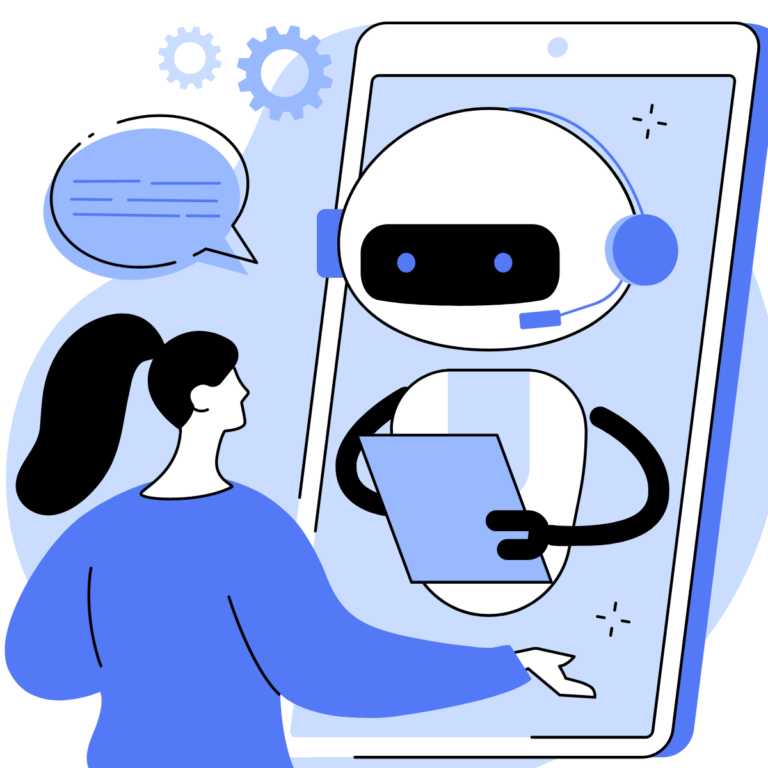Cold. Heartless. Sterile.
CHS. This is an acronym I use with all my clients to describe poorly designed processes. Oftentimes the biggest mistake I see companies make is that they design processes that are good for the company but not good for the customers. The company may reduce costs and increase its profitability, but only to the detriment of the people who are experiencing that process.
You might design a process that is easier, more efficient and more productive for your company, but it makes life harder for your customers. One of my biggest pet peeves right now is when companies try to remove bodies from processes and remove any type of responsibility of a company on the process when it actually hinders the customers’ experience.
Let’s take the case of chatbots.
The use of chatbots has many advantages for a company. They save time and money, increase the labor efficiency ratio, and generate leads. Chatbots are very common nowadays. In fact, the global chatbot market is expected to reach $3.62 billion by 2030.
Chatbots can help businesses improve and streamline their customer service processes. They can answer simple queries, collect user data and gather feedback, not to mention they are available 24/7. It ensures that customers get an instant response. But this tool, when used in a poorly designed process, can hurt customers and your company image more than it helps.
In a Journal of Marketing study, data suggests that chatbots have a negative effect on corporate image when customers are angry, frustrated or stressed. Moreover, according to Zendesk’s 2022 CX Trends report, 60% or every three in five customers reported experiencing frequent disappointment when dealing with chatbots.
50% of customers state that it took too many questions before the bot realized it could not solve their issue, and 40% get frustrated when they cannot choose between a human and a bot at the start of a service experience.
The final issue cited in the report is related to contact center routing and forcing consumers down an automated path in an attempt to save resources. This is a classic example of a CHS process: It helps the company save time and money, but it makes it difficult for customers to reach the company to actually solve their problems.
The chatbot is not the enemy here… it is just a tool. Chatbots and other tools are not the problem: The problem is how these tools are being used and integrated into the customer service process design. Sometimes when we design processes, we do things that are good for us as a company, like automate or remove someone from the workflow, but with fewer human touchpoints, your process becomes cold and makes customers feel terrible.
For example, what if a customer is upset and wants to talk to a human and is instead does not have the option to talk to one. She is forced to go through so many loops before reaching a live agent that she eventually gives up. That is what cold, heartless and sterile looks like. One of the top things customers really hate is when a business does not have empathy for their situation, which is how CHS ruins customer morale.
Companies need to be careful when designing processes.
A poorly designed process can be efficient but produce undesirable results. What we have to do is think deliberately and thoughtfully. We have to think about what makes sense for the customer first, and then design the operation. Always think of yourself as a consumer who experiences another company. You do not want to fill out a number of forms, answer several questions with a bot to find out that you will not even be able to talk to an actual person.
The use of chatbots is most successful when it is used at the right time in the customer’s shopping journey. We have to think about where it can deliver consistent value to the user and provide the right answer, and when it is necessary for a human to come in.
When designing operations, we have to put things where they belong, in the right place at the right time. We have to figure out what touchpoints matter the most that require a human element and which ones can be automated for efficiency.
Ultimately, we have to think through the experience of the customer and the problems they face. This way, you can develop a well-designed process that improves the lives of customers experiencing the process.
A cold, heartless and sterile process may increase your efficiency and productivity quickly, but in the long run it will drive your customers away. But with a well-designed process, you can build and keep customers for life. Having loyal customers is key to any business’s success. Aside from coming back to buy your products and services, they are also your best brand ambassadors. When you take care of the people going through the process, both your customers and employees, everything else will follow.
In love and respect,
Hilary Corna














